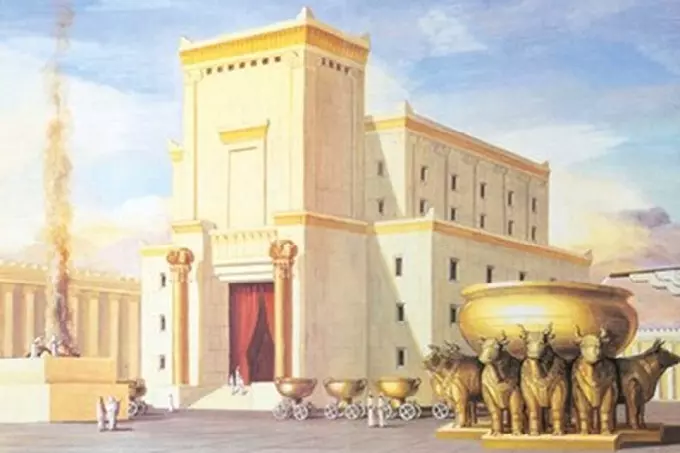There is an ancient gate in the eastern part of Jerusalem that remains walled up and impassable to this day. Millions of Jews, Christians, and Muslims believe that they will miraculously open at the end of days when God and the Messiah will appear for judgment on all mankind.
This is the mysterious Golden Gate, and in recent years it has become a hotbed of tension as religious groups, protesters, and government agencies, many of whom are convinced that the end of the world is near, fight for control of it. What is the history of this mysterious entrance, why is it closed, and what warnings does it portend for the future?
The mysterious East Gate, surrounded by a wall
The Old City of Jerusalem is a place quite unlike any other on earth: 0.35 square miles (0.9 square kilometers) of winding corridors and ancient architecture surrounded by imposing medieval stone walls.
Six of the city’s eight gates were built by the Ottoman Turks five centuries ago, one was built in recent times, and the Turks rebuilt the eighth gate. This eighth gate is special, leading directly to the Temple Mount, where the Temple of Solomon once stood and the golden Dome of the Rock now rises. The future of millions around the world is tied to this mysterious eschatological entrance, endowed with prophetic power and potential.
It is the most mysterious gate in Jerusalem, and indeed in the whole world. The Jews call it Shaar ha-Rahamim, the Gate of Mercy; the Muslims, Bab al-Zahabi, the Gate of Eternal Life; and the Christians, the Golden Gate.
The reason for the name Golden Gate can best be explained by archaeologist James Fleming, who suggests that it “probably came from a reference in the New Testament to a gate known as the Beautiful (Acts 3:2, 10)…
In the earliest Greek New Testament the word for “beautiful” is oraia. When Jerome translated the New Testament into Latin in the fourth century, he replaced the Greek oraia with the similar-sounding Latin aurea, not the Latin word for “beautiful. That is why the Latin Vulgate text says ‘Golden Gate’ instead of ‘Beautiful Gate.’”
The double Golden Gate of Jerusalem is on the east wall, between the Lion’s Gate and the Huldah Gate. Like the Huldah Gate, the Golden Gate is set in stone. They lead directly to the Temple Mount and face the valley of Jehoshaphat and the ancient Jewish cemetery at the foot of the Mount of Olives.
History of the Gate
There is some debate about the dates of the construction of the present-day Golden Gate: undoubtedly, it is very old, but according to one version, it was built in the Umayyad period, under Abd al-Malik (685 – 705), and according to another one – much earlier, under Byzantine Emperor Justinian I. In a hundred years later, the Emperor Heraclius I. rode up to them triumphantly, having defeated the Persians and taken from them the Christian relic – the Holy Cross. But, according to legend, the Golden Gate closed in front of him, and he heard a reproaching voice from heaven – that Jesus, when he passed through here, looked more humble. Heraclius got down from his saddle and took off his boots without a second thought, and then the gates mercifully opened.
The Arabs closed them in the early ninth century, the Crusaders opened them in the early twelfth century, and since then have opened them on the day Jesus entered the Holy City and on the Memorial Day of Emperor Heraclius.
The Ottoman Turks turned it into a military fortification: a watchtower
Earlier, there was a gate from the time of the Second Temple. After the capture and destruction of Jerusalem during the Jewish War, the Romans also built (rebuilt the destroyed) gates – Emperor Eli Hadrian did not like his own unfortified cities.
In Jewish texts, the eastern gate of the Temple Mount is called the Shushan Gate. If the Golden Gate corresponds to its location, it is certainly the oldest gate of the Old City.
The Golden Gate is not only the Golden Gate!
Actually, the Golden Gate is a Christian (and Arabic) name. The Gate of Eternal Life is also a Muslim name. Also, the Arabs have a different name for each of the doors: the left one, when facing them, is the Gate of Mercy; the right one, the Gate of Repentance.
In Hebrew, they are called differently – Shaar ha-Rahamim, the Gate of Mercy. This name has two versions of origin: the Jews always passed through them to the Temple Mount and asked the Lord for mercy for the Jewish people; during the Crusaders, all the gates in the Western wall were closed to Jews, and only the Golden Gate was mercifully open.
